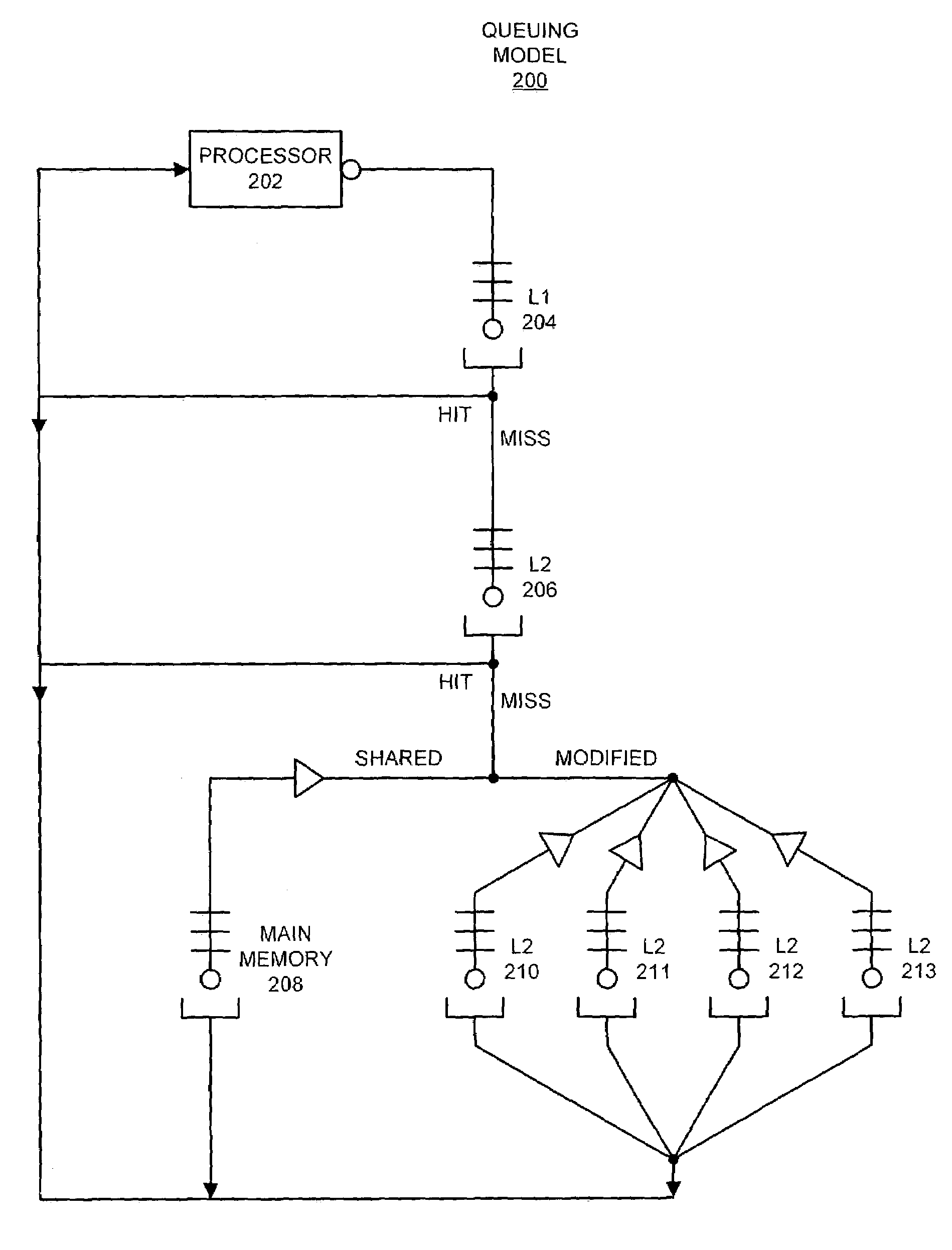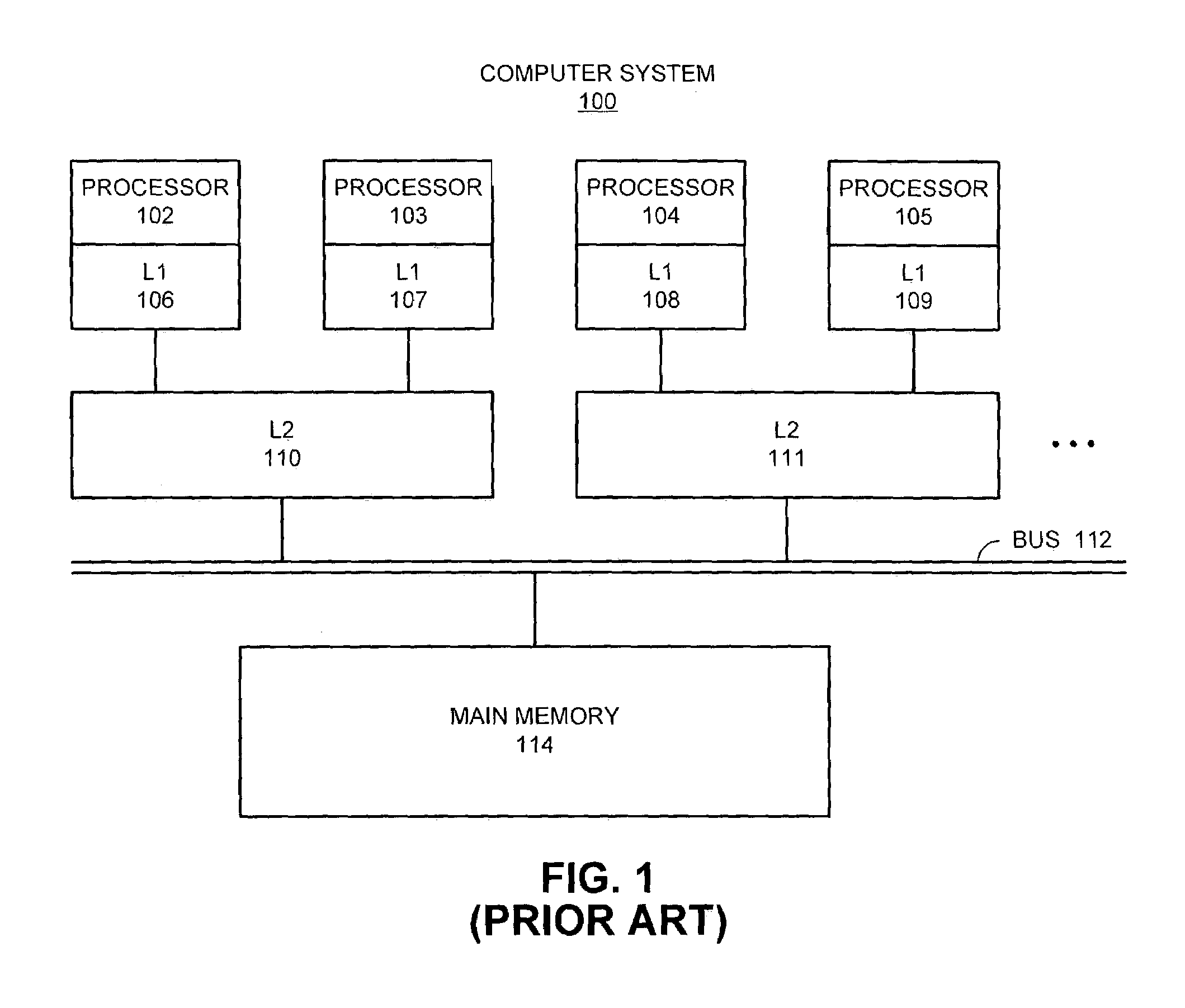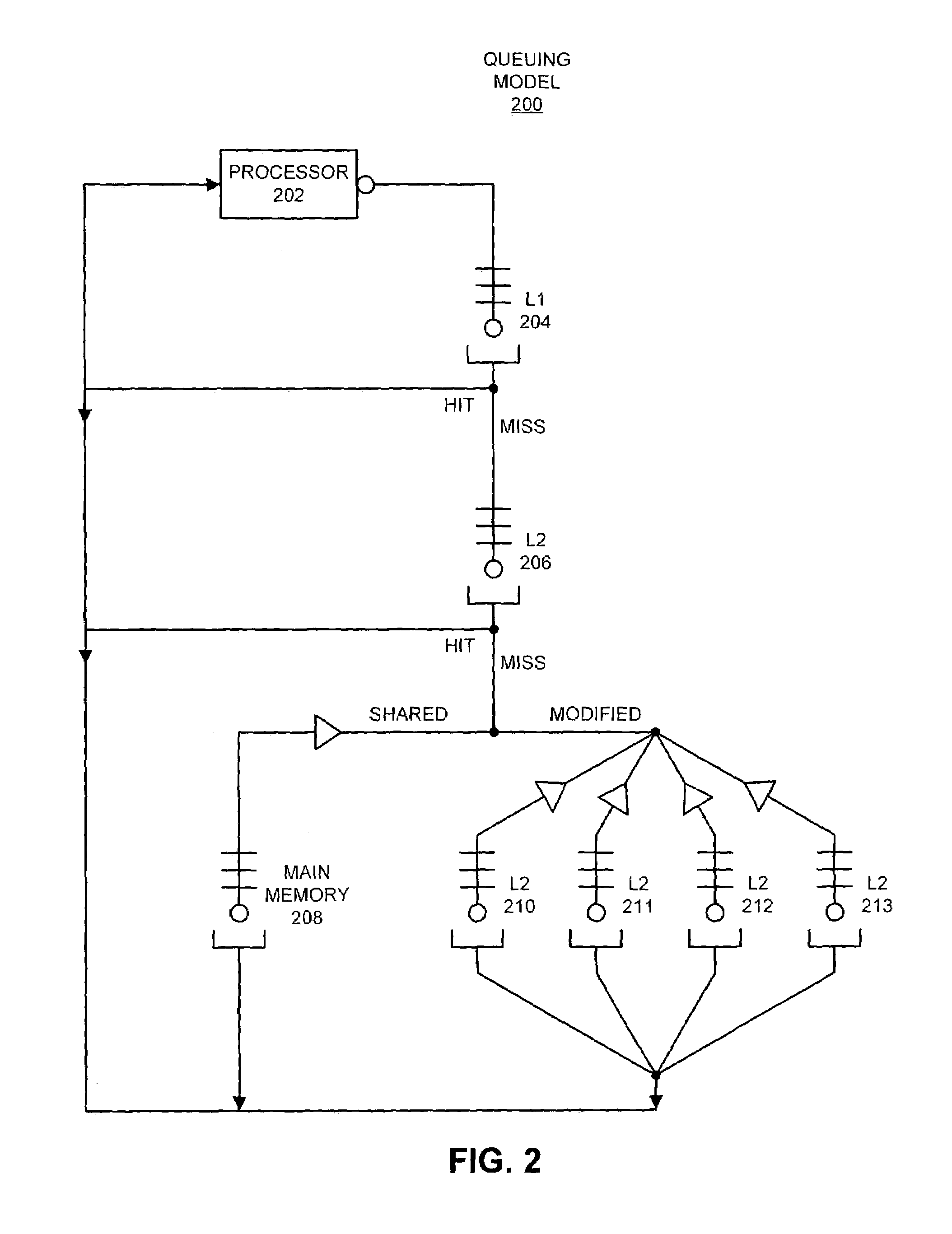Modeling overlapping of memory references in a queueing system model
a system model and memory reference technology, applied in the field of computer system performance modeling, can solve the problems of large fraction of time spent waiting for microprocessor systems, large differences in microprocessor clock speeds, and hidden memory request latency, etc., and achieve the effect of facilitating modeling the effects of overlapping memory referen
- Summary
- Abstract
- Description
- Claims
- Application Information
AI Technical Summary
Benefits of technology
Problems solved by technology
Method used
Image
Examples
example
[0106]Here we will obtain a model for two BFs corresponding to misses to the L2 cache and misses to the main memory. We will use indices 1 and 2 respectively. Here we do not distinguish among types of misses (e.g. loads).
[0107]This modeling was done using data obtained by heuristically changing some miss rates and latencies without using any formal experimental design methodology discussed in the preceding section. As a result, for example, out of the 27 data points, 22 have the same L2 latency.
[0108]The miss rates were varied by changing the cache size. Therefore, we do not include the cache size as one of the predictors. This leaves us with two pairs of miss rates and latencies and we make the two BF be functions of the corresponding pairs. Thus, the model looks like
AIT=AITinf+BF(r1,lat1)*r1*lat1+BF(r2,lat2)*r2*lat2
In the notation of the preceding section, P1={r1, lat1} and P2={r2, lat2}.
[0109]For example, method 2 produces the BFs shown in FIGS. 5A and 5B respectively. Note that ...
PUM
 Login to View More
Login to View More Abstract
Description
Claims
Application Information
 Login to View More
Login to View More - R&D
- Intellectual Property
- Life Sciences
- Materials
- Tech Scout
- Unparalleled Data Quality
- Higher Quality Content
- 60% Fewer Hallucinations
Browse by: Latest US Patents, China's latest patents, Technical Efficacy Thesaurus, Application Domain, Technology Topic, Popular Technical Reports.
© 2025 PatSnap. All rights reserved.Legal|Privacy policy|Modern Slavery Act Transparency Statement|Sitemap|About US| Contact US: help@patsnap.com



